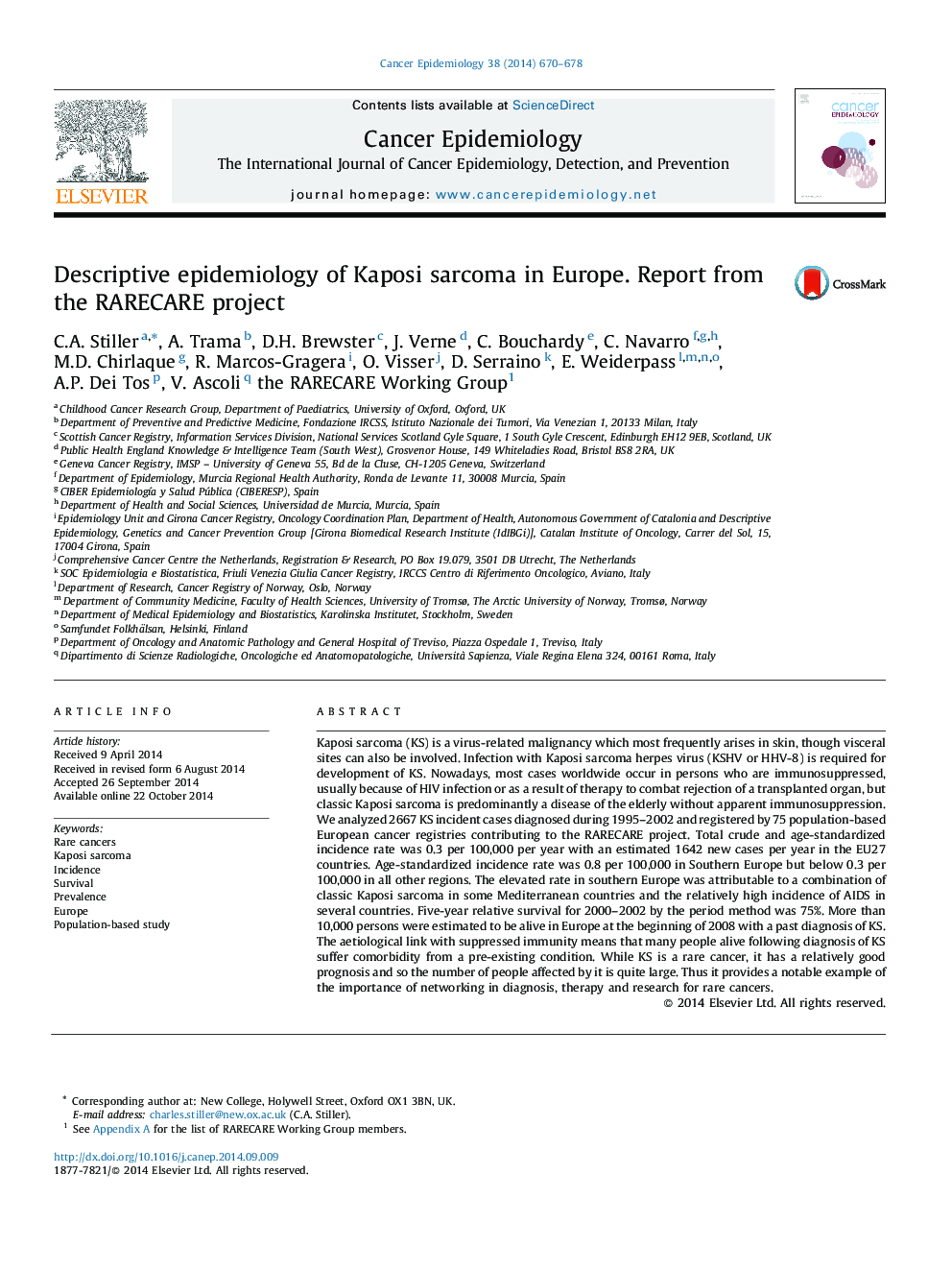| کد مقاله | کد نشریه | سال انتشار | مقاله انگلیسی | نسخه تمام متن |
|---|---|---|---|---|
| 10897547 | 1083865 | 2014 | 9 صفحه PDF | دانلود رایگان |
عنوان انگلیسی مقاله ISI
Descriptive epidemiology of Kaposi sarcoma in Europe. Report from the RARECARE project
دانلود مقاله + سفارش ترجمه
دانلود مقاله ISI انگلیسی
رایگان برای ایرانیان
کلمات کلیدی
موضوعات مرتبط
علوم زیستی و بیوفناوری
بیوشیمی، ژنتیک و زیست شناسی مولکولی
تحقیقات سرطان
پیش نمایش صفحه اول مقاله

چکیده انگلیسی
Kaposi sarcoma (KS) is a virus-related malignancy which most frequently arises in skin, though visceral sites can also be involved. Infection with Kaposi sarcoma herpes virus (KSHV or HHV-8) is required for development of KS. Nowadays, most cases worldwide occur in persons who are immunosuppressed, usually because of HIV infection or as a result of therapy to combat rejection of a transplanted organ, but classic Kaposi sarcoma is predominantly a disease of the elderly without apparent immunosuppression. We analyzed 2667 KS incident cases diagnosed during 1995-2002 and registered by 75 population-based European cancer registries contributing to the RARECARE project. Total crude and age-standardized incidence rate was 0.3 per 100,000 per year with an estimated 1642 new cases per year in the EU27 countries. Age-standardized incidence rate was 0.8 per 100,000 in Southern Europe but below 0.3 per 100,000 in all other regions. The elevated rate in southern Europe was attributable to a combination of classic Kaposi sarcoma in some Mediterranean countries and the relatively high incidence of AIDS in several countries. Five-year relative survival for 2000-2002 by the period method was 75%. More than 10,000 persons were estimated to be alive in Europe at the beginning of 2008 with a past diagnosis of KS. The aetiological link with suppressed immunity means that many people alive following diagnosis of KS suffer comorbidity from a pre-existing condition. While KS is a rare cancer, it has a relatively good prognosis and so the number of people affected by it is quite large. Thus it provides a notable example of the importance of networking in diagnosis, therapy and research for rare cancers.
ناشر
Database: Elsevier - ScienceDirect (ساینس دایرکت)
Journal: Cancer Epidemiology - Volume 38, Issue 6, December 2014, Pages 670-678
Journal: Cancer Epidemiology - Volume 38, Issue 6, December 2014, Pages 670-678
نویسندگان
C.A. Stiller, A. Trama, D.H. Brewster, J. Verne, C. Bouchardy, C. Navarro, M.D. Chirlaque, R. Marcos-Gragera, O. Visser, D. Serraino, E. Weiderpass, A.P. Dei Tos, V. Ascoli, the RARECARE Working Group the RARECARE Working Group,